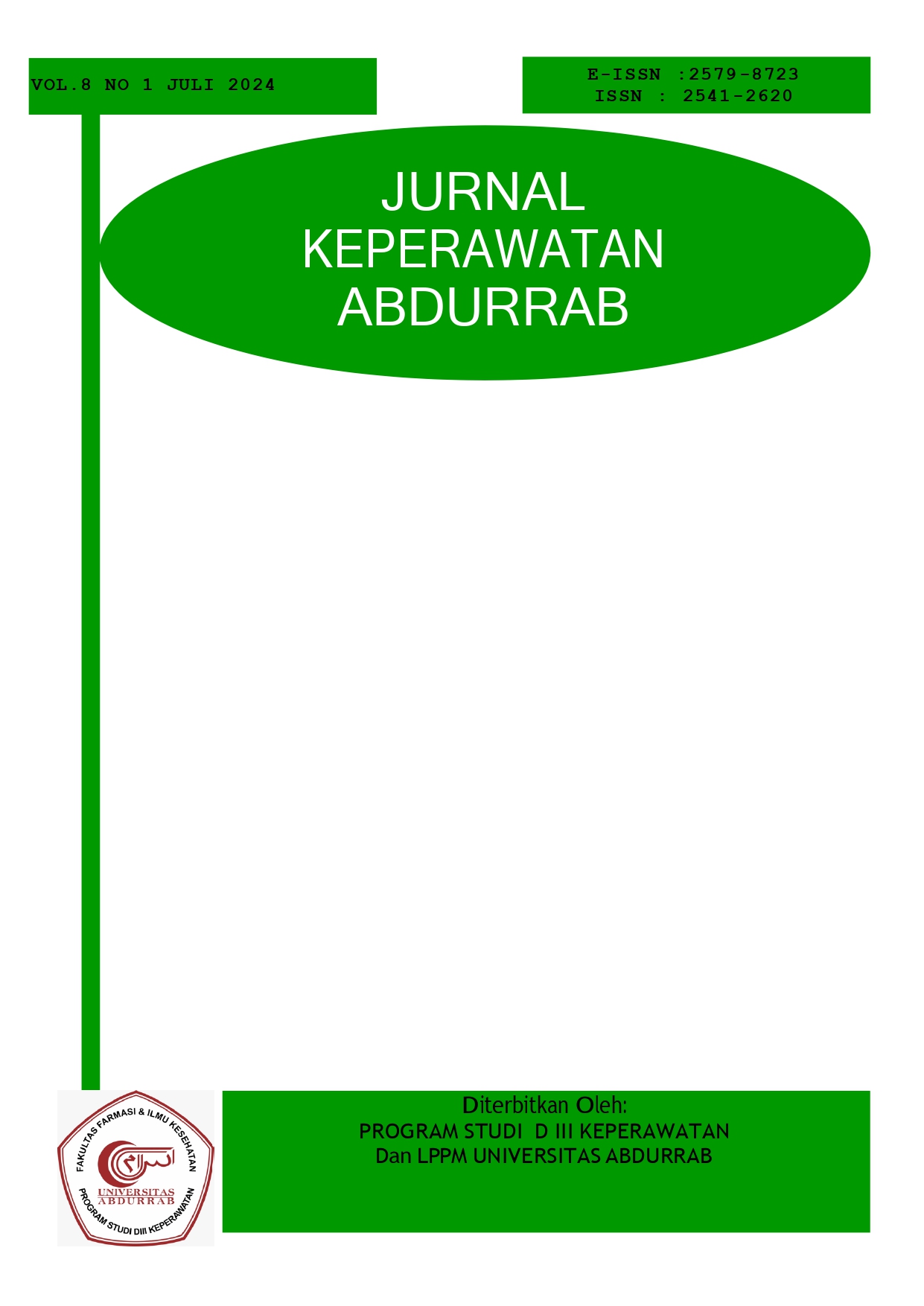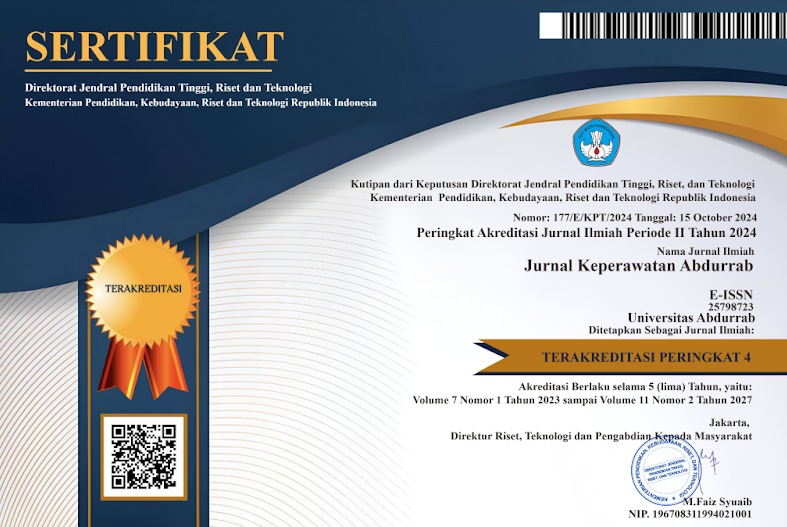PENGARUH BALLON BLOWING TERHADAP FATIQUE PASIEN DIABETES MELITUS TIPE 2 DI PUSKEMAS SIMPANG TIGA KOTA PEKANBARU
DOI:
https://doi.org/10.36341/jka.v8i1.4674Keywords:
Fatique, Diabetes Melitus, Ballon BlowingAbstract
Diabetes mellitus is a non-communicable disease that causes the highest death in the world. The incidence of type 2 diabetes mellitus is quite high in the Simpang Tiga Health Center, Pekanbaru City. One of the complaints often experienced by people with diabetes mellitus is fatigue. Fatique in type 2 diabetes mellitus sufferers is influenced by physical and psychological factors, physical factors include complications, sleep quality, and pain while psychological factors are anxiety and depression. The purpose of this study was to determine the effect of balloon blowing on the fatigue of patients with type 2 diabetes mellitus. This research is quantitative in nature. This research was conducted at the Simpang Tiga Health Center in Pekanbaru City in May 2023 with 18 respondents. The research design used was a quasy experimental design, using the Fatique Serverity Scale questionnaire research instrument. The analysis used is the frequency distribution and the statistical test Paired-t test to see the effect on the variables. The results of the study concluded that there was a significant effect of balloon blowing on the fatigue of diabetes mellitus patients (p value 0.000 : a = 0.05). This researcher recommends to future researchers to conduct further research with a control group, and other interventions. So that the scope of discussion becomes wider.
Downloads
Downloads
Published
Issue
Section
License
1. Copyright of all journal manuscripts is held by the Jurnal Keperawatan Abdurrab
2. Formal legal provisions to access digital articles of electronic journal are subject to the provision of the Creative Commons Attribution-ShareAlike license (CC BY-NC-SA), which means that Jurnal Keperawatan Abdurrab is rightful to keep, transfer media/format, manage in the form of databases, maintain, and publish articles.
3. Published manuscripts both printed and electronic are open access for educational, research, and library purposes. Additionally, the editorial board is not responsible for any violations of copyright law.
licensed under a Creative Commons Attribution-ShareAlike 4.0 International License.






